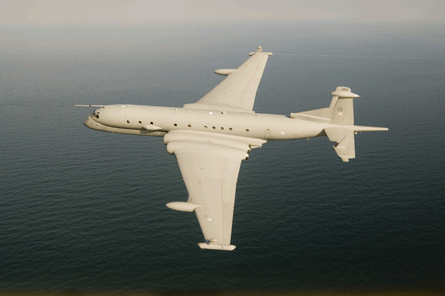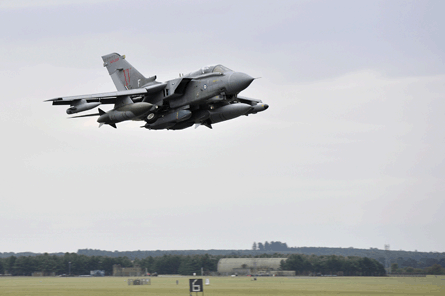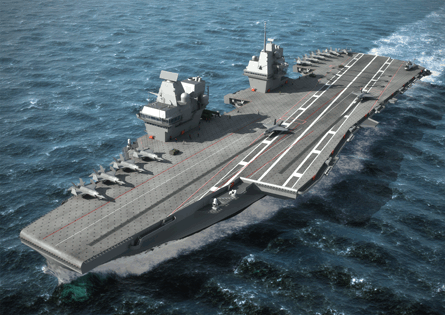Late last year, the UK armed forces were rocked by the effects of a Strategic Defence and Security Review (SDSR) process overseen by a new coalition government determined to tackle a massive budget deficit head-on.
Almost 12 months later, the defence industry will gather for its largest post-SDSR coming-together at the Defence & Security Equipment International show, or DSEi, which will be held in London's Docklands on 13-16 September.
Since the event was last held two years ago, the UK has lost its fixed-wing carrier strike capability with the early retirement of its BAE Systems Harrier GR7/9s, and seen its replacement maritime patrol aircraft, BAE's Nimrod MRA4, axed after a programme investment of over £3 billion ($4.8 billion).
 |
|---|
© BAE SystemsThe Nimrod MRA4 project was axed |
Also gone are two of the Royal Navy's three Invincible-class aircraft carriers and the Royal Air Force's last Panavia Tornado F3 fighters and Nimrod R1 electronic intelligence aircraft. Two squadrons equipped with the Tornado GR4 strike aircraft have also recently been disbanded, with the move having also trimmed a fleet that is expected to remain in use until around 2020.
Dramatic in nature, these cuts were adopted against a backdrop of the UK's recent withdrawal of forces from Iraq, and with plans in place for the country to end its combat commitment in Afghanistan around 2015, following the progressive transfer of control to local authorities. But the rise of the "Arab Spring" movement in nations across the Middle East and North Africa throughout this year has provided an unexpected test for a military hard-hit by the spending cuts introduced by UK defence secretary Dr Liam Fox.
In announcing the recommendations of the SDSR last October, UK Prime Minister David Cameron said his country's coalition government was seeking to tackle an investment "black hole" inherited from the previous Labour administration, which it valued at £38 billion. Failure to tackle this shortfall now could result in a more "severe recalibration in the future", Fox told the Royal United Services Institute's Air Power conference in London in mid-July.
The SDSR has received much criticism for the swift nature of its completion and the severity of its cuts. Speaking at the same event, one analyst described the process as having been "four years in anticipation, but only four months in gestation".
Sir Brian Burridge, Finmeccanica UK's vice-president, strategic marketing, and formerly one of the RAF's most senior ranking officers, drew a different analogy when referring to the loss of key capabilities. "The concern is that this government might come out of the supermarket without a balanced meal, and that the next time it goes the shelves will be empty," he said.
 |
|---|
© SAC Simon Armstrong/Crown CopyrightTornado GR4s will serve until around 2020 |
DSEi will provide a focus for the UK's defence contractors to pursue already planned deals and fresh business, both at home and on the international stage. It will also highlight the security opportunities available, with London preparing to host the Olympic Games in mid-2012.
Speaking at a pre-show media briefing on 6 September, minister for international security strategy Gerald Howarth identified the role that global defence and security sales could play in helping to repair the UK's economic prospects. "Exports are critical to a sustainable recovery," he said. "The UK defence industry is proving itself to be well-placed to weather the storm."
With UK defence exports having totalled around £6 billion in 2010 - when it was second only to the USA in terms of total exports - and security systems around £2 billion more, selling on the global stage is a vital requirement at a time of domestic squeeze. Current targets include closing a proposed government-to-government deal to supply Eurofighter Typhoons to Oman, and a campaign to offer the same type for India's medium multi-role combat aircraft deal.
The Typhoon made its combat debut for the UK as a multi-role platform earlier this year, with the RAF employing the type's air-to-surface weapons against regime targets in Libya. Perhaps crucially for the European type, the fighter also looks set to receive an active electronically scanned array radar enhancement, while MBDA's Meteor beyond-visual-range air-to-air missile also should be available for operational use from around 2015.
But more attention at DSEi will be given to Lockheed Martin's F-35 Joint Strike Fighter (JSF), which will be on display as a full-scale mock-up. However, reflecting the UK's last-minute decision to swap to the C-model carrier variant, the design on show will be in the short take-off and vertical landing guise.
To meet the Joint Combat Aircraft requirement from late this decade, the F-35C will be flown from the Royal Navy's (RN's) two future aircraft carriers, with the combination to reintroduce a big-deck operating model last employed by the UK in the late 1970s.
 |
|---|
© BAE SystemsF-35Cs will fly from the UK's future carriers |
One source previously involved with the JSF programme describes the SDSR's surprise variant switch as potentially "one of the most catastrophic procurement decisions ever made". Abandoning years of experience in flying vertical/short take-off and landing Harriers could end up costing UK taxpayers billions of pounds extra, the source claims, as a result of the additional training needed to ensure pilots maintain proficiency. Regaining this skill is already a focus of attention, with the RN looking to train a new cadre of Fleet Air Arm officers on US Navy Boeing F/A-18E/F Super Hornets.
The UK's exact requirements for the F-35 have yet to be set, but the Ministry of Defence has previously identified a need for up to 138 of the aircraft. An initial three F-35Bs were ordered to participate alongside the US military during initial operational test and evaluation of the new aircraft, but the allies are working out the details of a deal to exchange the last example for an F-35C.
The new type could achieve initial operating capability as a land-based asset from roughly 2018, before launching embarked operations around 2020. Its introduction must be balanced with the planned draw-down of the Tornado GR4 force: an activity that Fox says will be "particularly challenging".
Some level of funding commitment will be required next year, to cover the order of long-lead items for an initial batch of around 16 aircraft to be built during the programme's low-rate initial production phase.
"We are still in the midst of the post-defence review figuring our conversion from -35B to -35C, and there's an awful lot of work still in that rescheduling process," says Air Marshal Kevin Leeson, the UK's chief of materiel (air).
For now, while the UK's carrier strike capability lapses, the strong performance of the Army Air Corps' Westland/Boeing Apache AH1 attack helicopters over Libya in May 2011 from HMS Ocean has highlighted one likely means by which the nation could respond to other such contingencies until its future aircraft carriers and F-35Cs enter use.
Plans to buy the JSF were safeguarded in July, when the government announced a planned £3 billion increase in defence spending for the five-year period starting 2015-16. This sum will help to cover initial spending on the F-35C, as well as the costs of converting both Queen Elizabeth-class carriers with catapults and arrestor gear.
The commitment also enabled the MoD last month to sign a £1 billion order for 14 Boeing CH-47 Chinook HC6 transport helicopters and to complete the acquisition of three Air Seeker (RC-135 Rivet Joint) surveillance aircraft. A memorandum of understanding covering logistics support activities and capability updates for the latter fleet until 2025 was also recently signed, with this valued at more than $850 million. The aircraft will replace the retired Nimrod R1s from 2014.
One glaring capability shortfall created by the SDSR has yet to be addressed, however. The cancellation of the Nimrod MRA4 has left the MoD having to improvise on the provision of long-range maritime patrol aircraft cover by using RAF Lockheed C-130J transports and RN AgustaWestland AW101 Merlin HM1 shipborne helicopters.
Proposals have been made by industry to adapt some C-130Js to assume the role on a more formal basis, but other contractors are looking at any potential demand to field a smaller aircraft, possibly using an airframe such as the Alenia Aeronautica C-27J or Hawker Beechcraft King Air. With money to remain tight for some years to come, the idea of acquiring a more dedicated type - such as Boeing's 737-based P-8, now in development for the US Navy - seems fanciful.
 |
|---|
© Crown CopyrightThe Apache/Ocean pairing could sail again |
Importantly, the costs associated with supporting NATO's Libyan operation since March have been covered from the Treasury reserve, and not the over-stretched defence budget.
The Libyan campaign has underlined the importance of the pending introduction of 14 Airbus A330-200-based Voyager tanker/transports from late this year, and of past investments in weapons systems such as MBDA's Storm Shadow cruise missile and dual-mode Brimstone air-to-surface missile, and Raytheon Systems' Paveway IV precision-guided bomb. It has also highlighted the value of the Bombardier Global Express-based Sentinel R1 surveillance aircraft's synthetic aperture radar/ground moving target indication sensor, months after it was identified in the SDSR for disposal after the needs of Afghanistan.
The jury is still out as to whether the government's cuts to date and commitment for a future spending increase will cover the armed forces' procurement plans. Answers could be quick in coming, however, with an independent body having been tasked with conducting an "affordability audit" late this year on the MoD's top projects.
Looking at the likely equipment spending bill out to 2018-19 in his Defence Analysis publication, military analyst Francis Tusa says: "The spend curve looks far from balanced, and [SDSR] could well cause as many troubles as it resolved." He adds: "The extra 1% annual defence budget rise is only kicking in after 2015, so one has to ask how the books have been balanced prior to that time, when some £3 billion in funding will be needed."
Source: Flight International



















